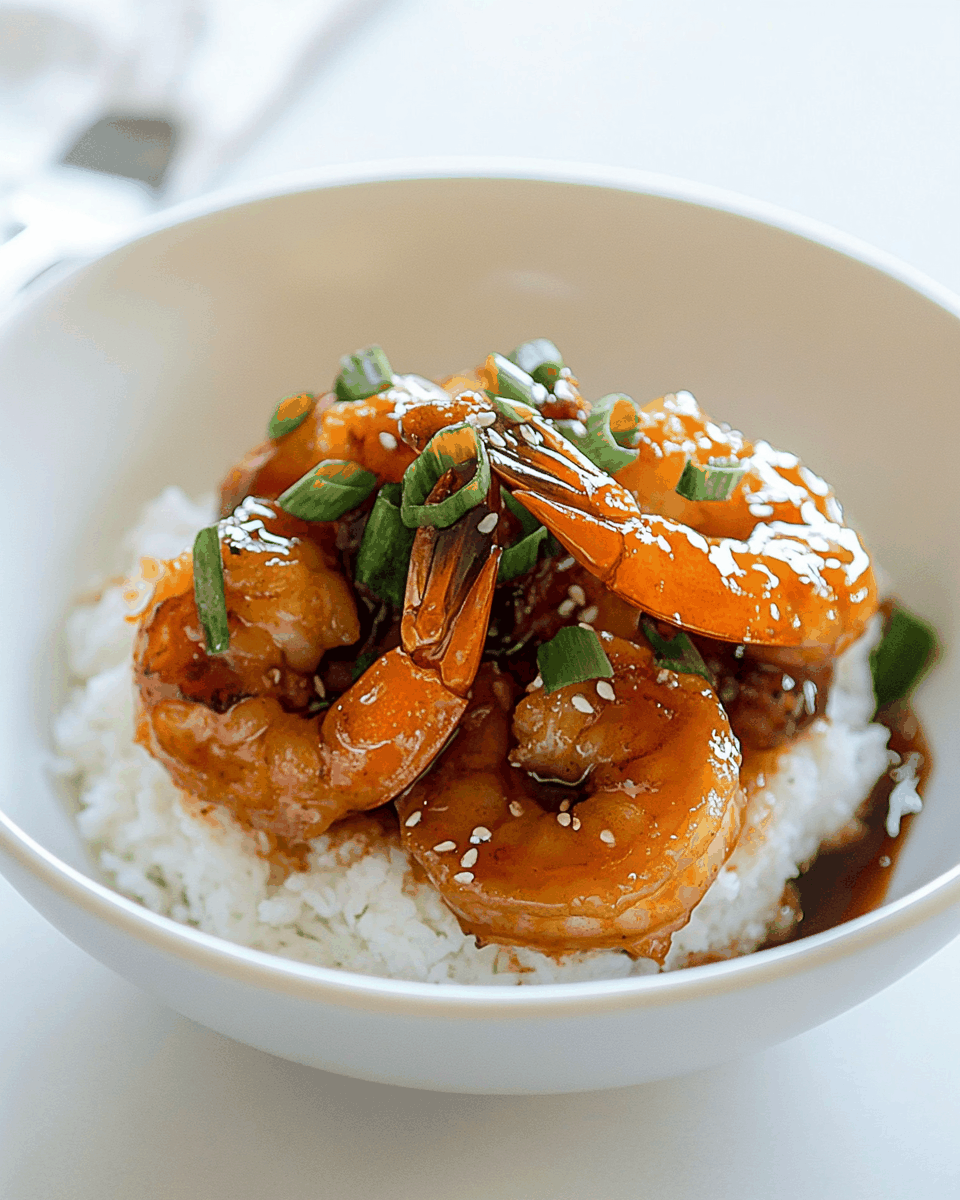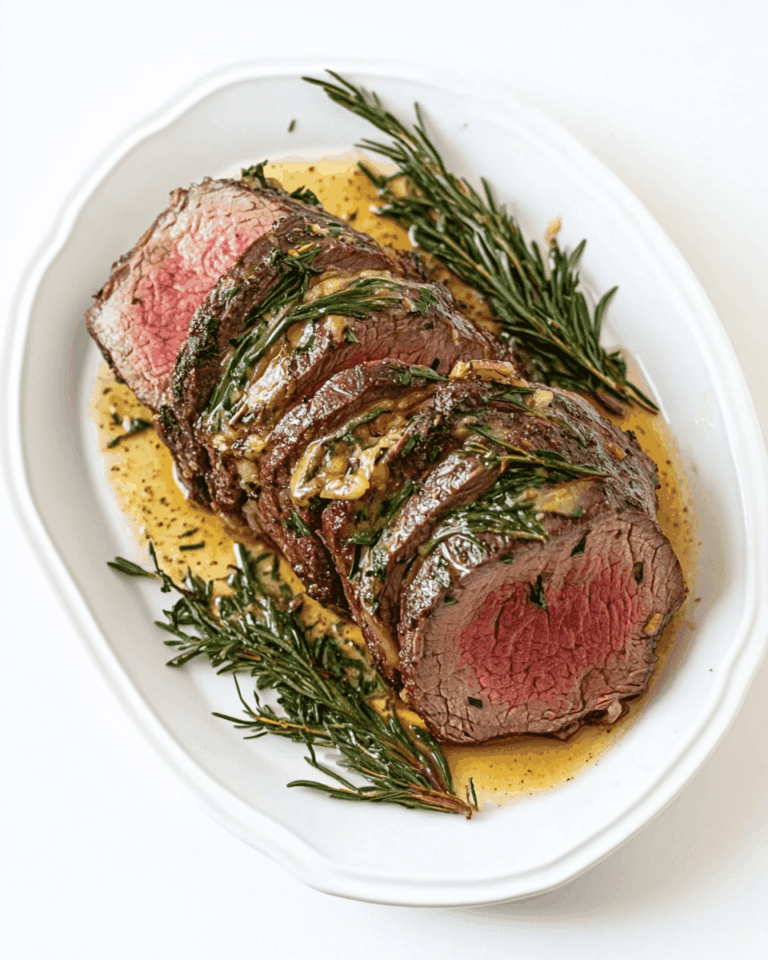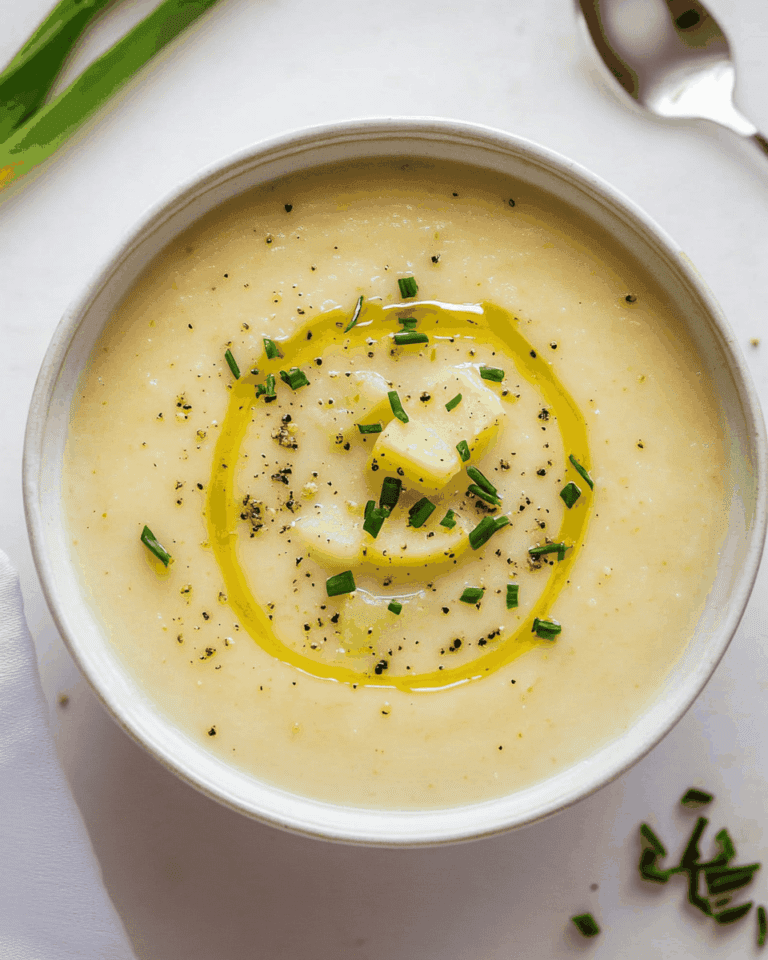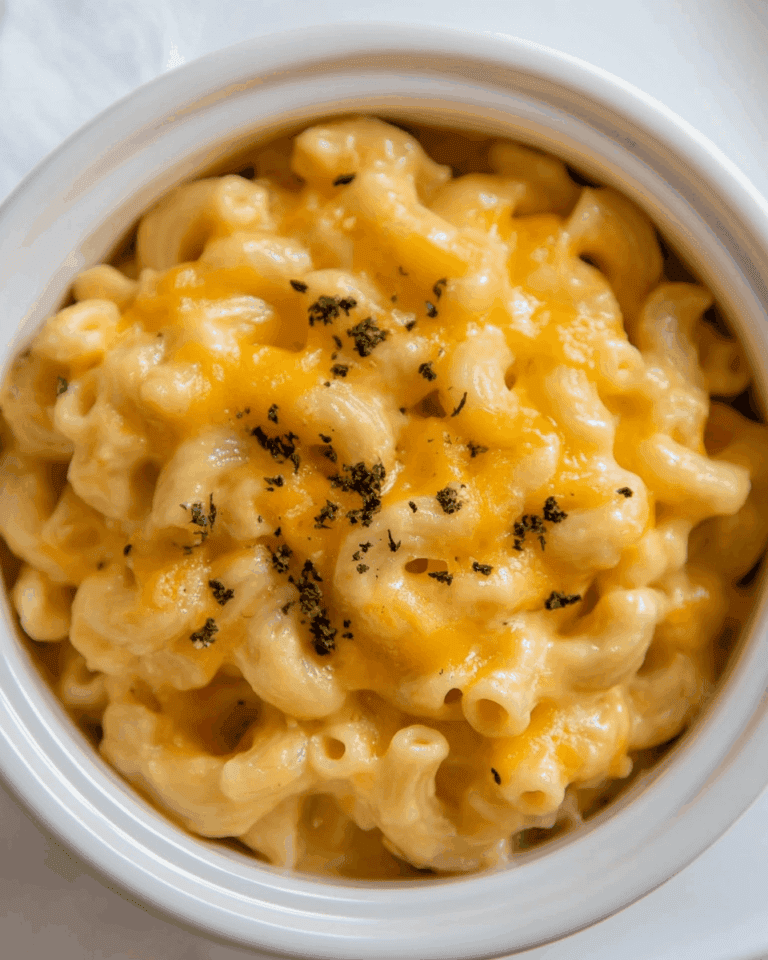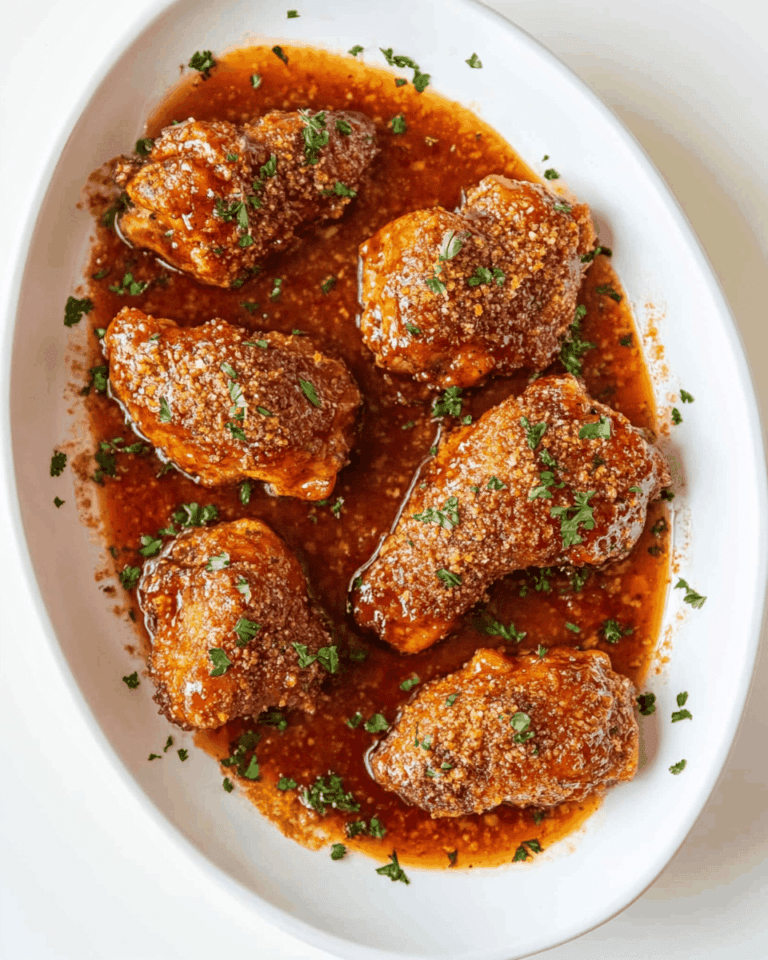Teriyaki Shrimp
Teriyaki Shrimp is a culinary delight that perfectly marries the sweetness of teriyaki sauce with the succulent texture of shrimp. Originating from Japanese cuisine, teriyaki refers to a cooking technique that involves grilling or broiling food while being glazed with a savory-sweet sauce. This dish stands out not only for its appealing flavor profile but also for its vibrant presentation, making it a fantastic choice for both casual family dinners and elegant gatherings. The shrimp, marinated in a rich, flavorful sauce, are quick to cook, ensuring that you can have a delicious meal on the table in no time. Pair it with steamed rice or fresh vegetables for a complete meal that satisfies the palate and the eyes. The balance of flavors in Teriyaki Shrimp—sweet, savory, and slightly tangy—will leave everyone asking for seconds. It’s an easy-to-make dish that brings the essence of Japanese cooking into your home kitchen.
Why You’ll Love This Recipe?
This Teriyaki Shrimp recipe is bound to become a favorite for several reasons. Firstly, the taste is simply irresistible; the blend of soy sauce, sugar, ginger, and garlic creates a perfect harmony that enhances the natural sweetness of the shrimp. The caramelization that occurs during cooking adds depth and complexity to each bite, making it a flavor-packed experience. Secondly, the preparation of Teriyaki Shrimp is incredibly straightforward. With minimal ingredients and quick cooking times, you can whip up this dish in under 30 minutes, making it ideal for weeknight dinners or last-minute gatherings. Thirdly, the appearance of this dish is visually stunning. The glossy glaze of the teriyaki sauce clings to the plump shrimp, and when garnished with sesame seeds and green onions, it becomes a feast for the eyes. Lastly, this recipe allows for creativity—whether you serve it over rice, noodles, or even a fresh salad, the possibilities are endless, making it a versatile addition to your meal rotation.
Ingredients:
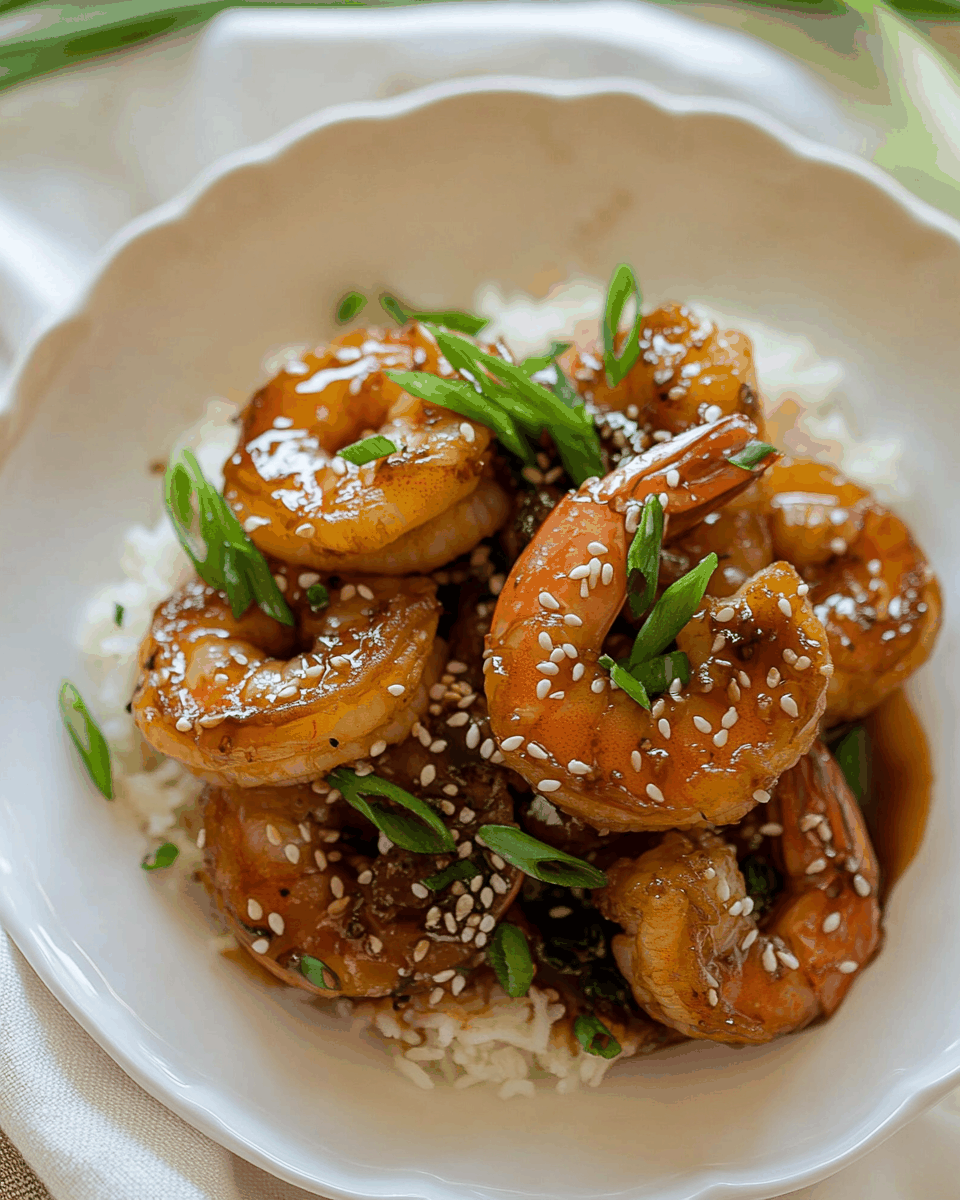
To make Teriyaki Shrimp, you will need the following ingredients, which are essential for capturing that authentic flavor and texture:
- Shrimp (1 pound): Choose large or extra-large shrimp, peeled and deveined. Fresh shrimp is ideal, but frozen shrimp can also work—just be sure to thaw them properly before cooking.
- Soy Sauce (1/4 cup): A key ingredient that provides the salty and umami flavor. Opt for a low-sodium variety if you prefer a milder saltiness.
- Brown Sugar (2 tablespoons): This adds sweetness and helps create that beautiful glaze. Light brown sugar is commonly used, but dark brown sugar can offer a richer flavor.
- Honey (1 tablespoon): Enhances the sweetness and gives a lovely glossy finish to the sauce. It also adds a floral note.
- Garlic (2 cloves): Minced garlic contributes aromatic depth to the sauce. Fresh garlic is recommended for the best flavor.
- Ginger (1 tablespoon): Freshly grated ginger adds a spicy warmth and a touch of brightness to the dish.
- Sesame Oil (1 teaspoon): A drizzle of sesame oil at the end of cooking lends a nutty flavor that complements the teriyaki sauce beautifully.
- Green Onions (for garnish): Chopped green onions add freshness and a pop of color to the finished dish.
- Sesame Seeds (for garnish): Toasted sesame seeds add a delightful crunch and enhance the presentation.
- Vegetable Oil (1 tablespoon): For sautéing the shrimp. A neutral oil works best to avoid overpowering the dish.
Each ingredient plays a crucial role in building the layered flavors that define Teriyaki Shrimp. It’s essential to gather everything before you start cooking, ensuring a smooth and enjoyable cooking process.
How To Make Teriyaki Shrimp?
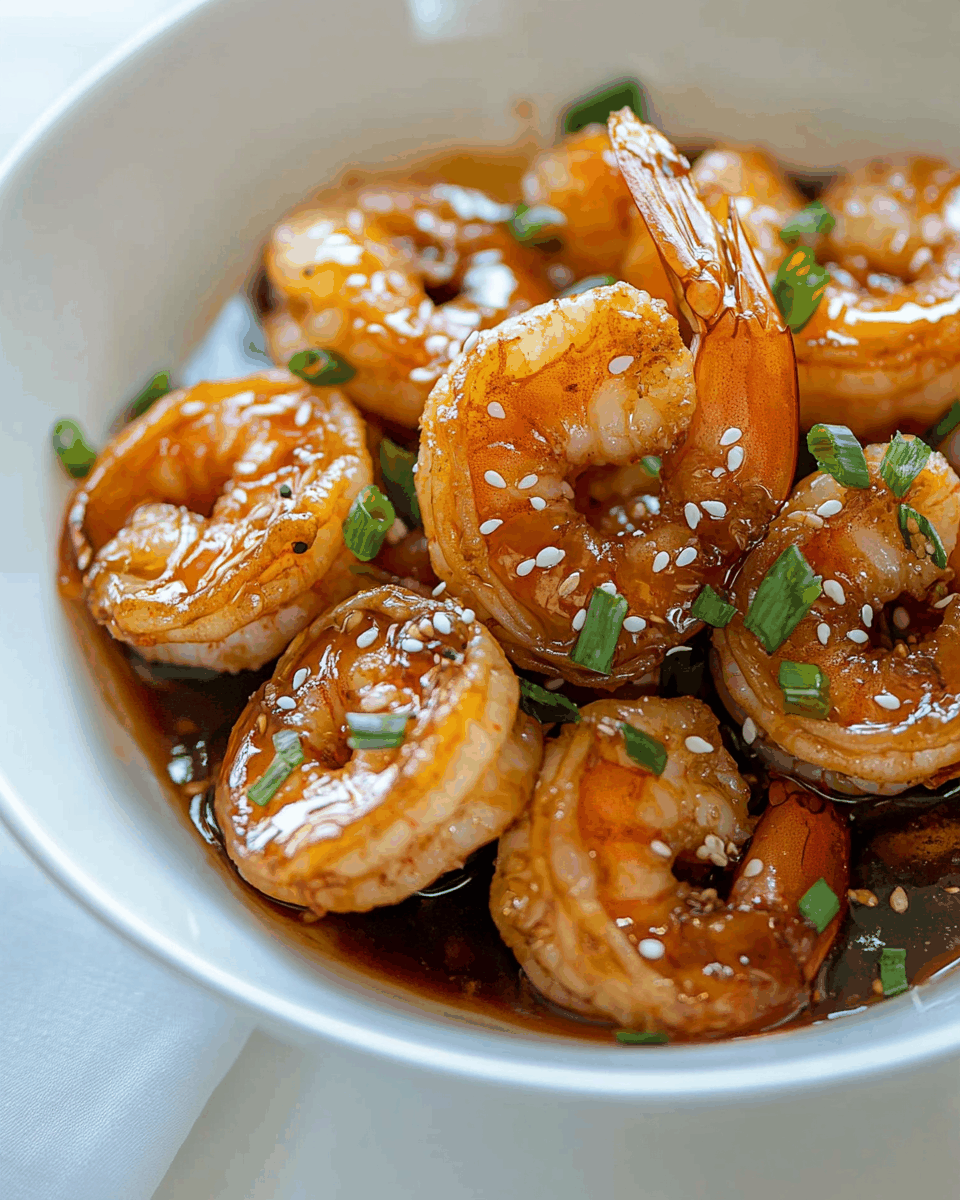
Creating Teriyaki Shrimp involves a few straightforward steps that can be completed in under half an hour. Follow this detailed guide to achieve delicious results:
- Prepare the Marinade: In a medium bowl, combine the soy sauce, brown sugar, honey, minced garlic, and grated ginger. Whisk these ingredients together until the sugar is mostly dissolved. This mixture will serve as both a marinade and a sauce.
- Marinate the Shrimp: Add the peeled and deveined shrimp to the marinade. Cover the bowl with plastic wrap or transfer the shrimp and marinade to a resealable bag. Allow the shrimp to marinate for at least 15 minutes at room temperature. If you have more time, marinating for 30 minutes in the refrigerator can intensify the flavors.
- Heat the Pan: Heat a large skillet or wok over medium-high heat. Add the vegetable oil and allow it to heat until shimmering, which usually takes about 1-2 minutes.
- Cook the Shrimp: Remove the shrimp from the marinade, letting any excess liquid drip off. Add the shrimp to the hot skillet in a single layer. Sauté for about 2-3 minutes on one side until they turn pink and opaque. Flip the shrimp and cook for an additional 2-3 minutes on the other side.
- Thicken the Sauce: After the shrimp are cooked, pour the remaining marinade into the skillet. Bring the mixture to a gentle boil and allow it to simmer for about 2-3 minutes until the sauce thickens slightly. Stir occasionally to ensure even cooking.
- Add Sesame Oil: Once the sauce has thickened to your liking, remove the skillet from heat and drizzle in the sesame oil. Stir well to incorporate the oil, enhancing the flavor of the dish.
- Garnish: Transfer the Teriyaki Shrimp to a serving platter. Garnish with chopped green onions and toasted sesame seeds for added flavor and a beautiful presentation.
- Serve: Enjoy your Teriyaki Shrimp immediately, either on its own or over a bed of rice, noodles, or accompanied by steamed vegetables.
Following these steps will give you perfectly cooked, flavorful Teriyaki Shrimp that is sure to impress anyone at your table. The combination of sweet and savory notes, along with the lovely texture of the shrimp, makes this dish a standout.
Tips For Variations:
While the classic Teriyaki Shrimp recipe is a winner on its own, there are numerous ways to customize it to fit your taste or to utilize ingredients you have on hand. Here are some creative variations:
- Add Vegetables: Incorporating colorful vegetables can add flavor and nutrition. Bell peppers, snap peas, broccoli, and carrots work well. Simply sauté them in the pan before adding the shrimp to ensure everything cooks evenly.
- Spicy Teriyaki Shrimp: For those who enjoy a bit of heat, add a teaspoon of red pepper flakes or a drizzle of sriracha to the marinade. This will give your dish a spicy kick that complements the sweetness of the teriyaki sauce.
- Alternative Proteins: If shrimp isn’t your preference, consider using chicken breast or tofu. Adjust the cooking time accordingly, as chicken will take longer to cook through, while tofu should be cubed and sautéed until golden.
- Make It a Stir-Fry: For a complete meal, turn your Teriyaki Shrimp into a stir-fry. Add cooked rice or noodles directly into the skillet with the shrimp and sauce, tossing everything together until heated through. This creates a one-pan meal that’s easy to serve and clean up.
- Change the Sauce: Experiment with different sauces. For instance, a mango or pineapple teriyaki sauce can add a fruity twist. Look for these options at your local grocery store or make your own by blending fruit puree with the traditional teriyaki ingredients.
- Experiment with Marinades: While the classic teriyaki marinade is fantastic, you can try other marinades like citrus-based or even a garlic-soy glaze. Each variation will impart its unique flavor to the shrimp.
- Budget-Friendly Alternatives: If shrimp is too expensive or unavailable, consider using frozen seafood blends, which often include shrimp along with other seafood. They can be cooked directly from frozen, making them a convenient and budget-friendly option.
- Garnish Variations: Beyond sesame seeds and green onions, think about other garnishes like chopped cilantro, shredded carrots, or even a sprinkle of chili powder for an extra burst of flavor and color.
These variations allow you to adapt the Teriyaki Shrimp recipe to your preferences, ensuring that you can enjoy this dish in multiple ways while keeping it exciting and flavorful.
Serving Suggestions:
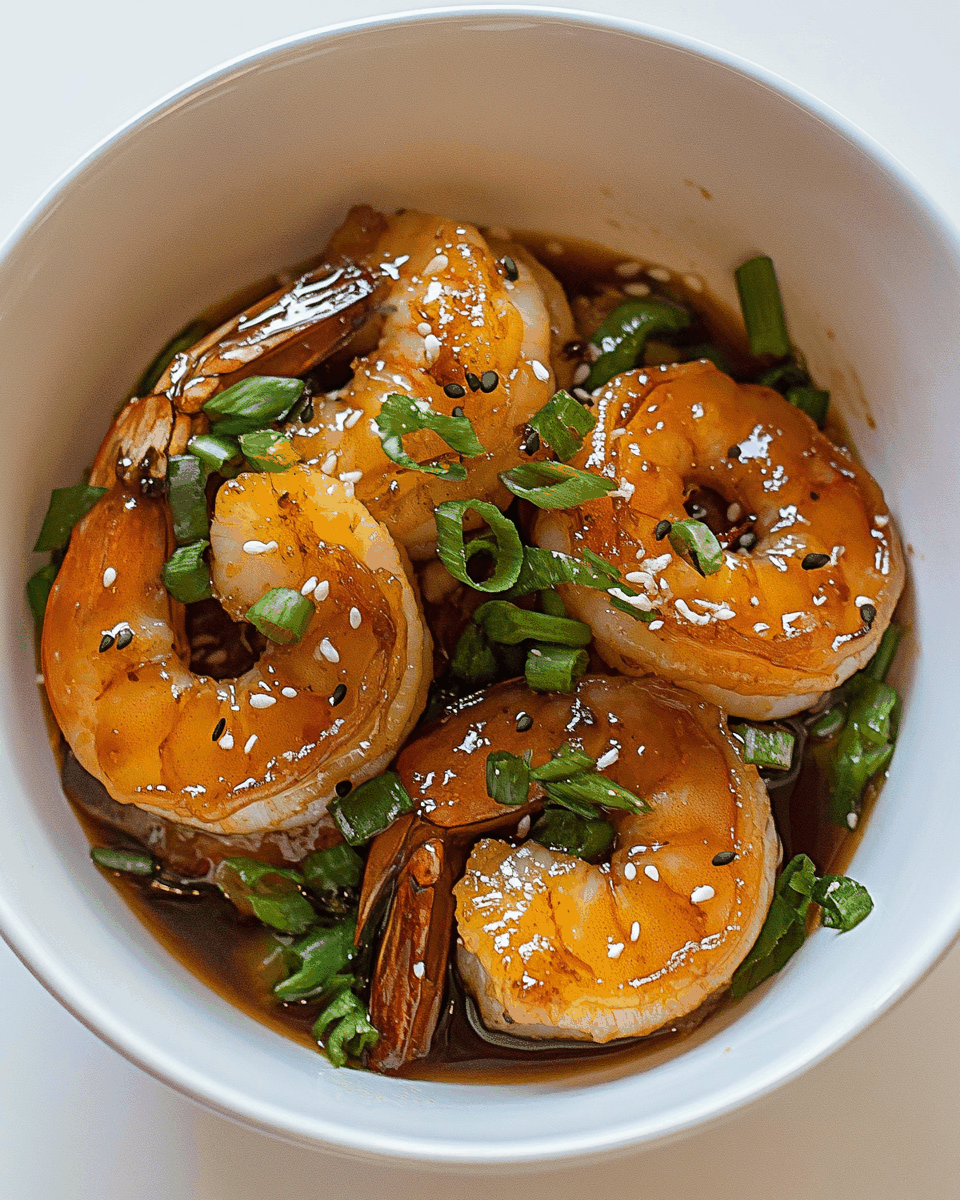
- Rice Bowls: Serve Teriyaki Shrimp over a steaming bowl of white or brown rice. This classic pairing not only absorbs the delicious sauce but also makes for a filling meal. You can also use jasmine or basmati rice for a fragrant touch.
- Noodle Dishes: Pair the shrimp with soba or udon noodles. Toss the noodles in the teriyaki sauce after cooking to infuse them with flavor. Add some sautéed vegetables for a complete, colorful dish.
- Salad Topper: For a lighter option, serve the shrimp on top of a fresh salad made with mixed greens, cucumbers, and carrots. Drizzle with a sesame or ginger dressing to enhance the flavors.
- Skewers: If you’re hosting a barbecue or a casual gathering, consider threading the marinated shrimp onto skewers. Grill them for a smoky flavor and serve with a side of dipping sauce for a fun appetizer.
- Appetizer Platter: Serve the Teriyaki Shrimp as part of an appetizer platter alongside other Japanese-inspired dishes like edamame, gyoza, or sushi rolls. This makes for a delightful spread when entertaining guests.
- Teriyaki Shrimp Tacos: Get creative by using the shrimp as a filling for tacos. Top with shredded cabbage, avocado, and a drizzle of creamy sauce for a fusion twist.
- Rice Paper Rolls: Wrap the shrimp in rice paper along with fresh herbs and vegetables for a refreshing take. Serve with a dipping sauce for a delightful appetizer or light meal.
- Serve with Pickled Vegetables: The acidity of pickled vegetables can balance the sweetness of the teriyaki sauce. Consider offering pickled cucumbers or radishes on the side for a zesty contrast.
Each of these serving suggestions can enhance your Teriyaki Shrimp experience, allowing you to explore different flavor combinations and presentations that will impress your family and friends.
FAQ:
Can I use frozen shrimp for this recipe?
Yes, you can use frozen shrimp. Just ensure they are thawed completely before marinating and cooking for the best texture and flavor.
How do I store leftovers?
Store any leftover Teriyaki Shrimp in an airtight container in the refrigerator for up to three days. Reheat gently in a skillet or microwave before serving.
Can I make Teriyaki Shrimp in advance?
While it’s best fresh, you can marinate the shrimp a few hours ahead of time. Cooking just before serving will yield the best texture and flavor.
What should I serve with Teriyaki Shrimp?
Teriyaki Shrimp pairs wonderfully with rice, noodles, or a fresh salad. You can also serve it alongside steamed vegetables for a complete meal.
Can I make this dish gluten-free?
Yes, simply replace regular soy sauce with gluten-free soy sauce or tamari. This will still provide the rich flavor without gluten.

Teriyaki Shrimp
Equipment
- Mixing Bowl
- Skillet
Ingredients
Shrimp
- 1 pound Large Shrimp, peeled and deveined Fresh shrimp is ideal, but frozen shrimp can also work.
- 1/4 cup Soy Sauce Opt for low-sodium variety if preferred.
- 2 tablespoons Brown Sugar Light brown sugar is commonly used.
- 1 tablespoon Honey Enhances sweetness and gives a glossy finish.
- 2 cloves Garlic, minced Fresh garlic is recommended for best flavor.
- 1 tablespoon Ginger, grated Freshly grated ginger adds warmth.
- 1 teaspoon Sesame Oil Adds a nutty flavor to the dish.
Garnishes
- Green Onions, chopped For garnish.
- Sesame Seeds, toasted For garnish.
- 1 tablespoon Vegetable Oil For sautéing the shrimp.
Instructions
- In a medium bowl, combine the soy sauce, brown sugar, honey, minced garlic, and grated ginger. Whisk until the sugar is mostly dissolved.
- Add the shrimp to the marinade. Cover and marinate for at least 15 minutes.
- Heat a skillet over medium-high heat and add vegetable oil until shimmering.
- Remove shrimp from marinade and sauté in a single layer for 2-3 minutes on each side until pink and opaque.
- Pour remaining marinade into the skillet and bring to a gentle boil. Simmer for 2-3 minutes until sauce thickens.
- Remove from heat and stir in sesame oil.
- Transfer to a serving platter and garnish with green onions and sesame seeds.
- Serve immediately over rice, noodles, or with steamed vegetables.

